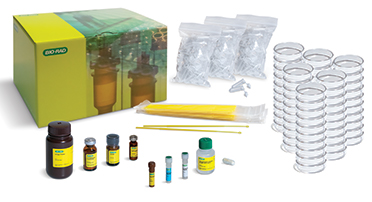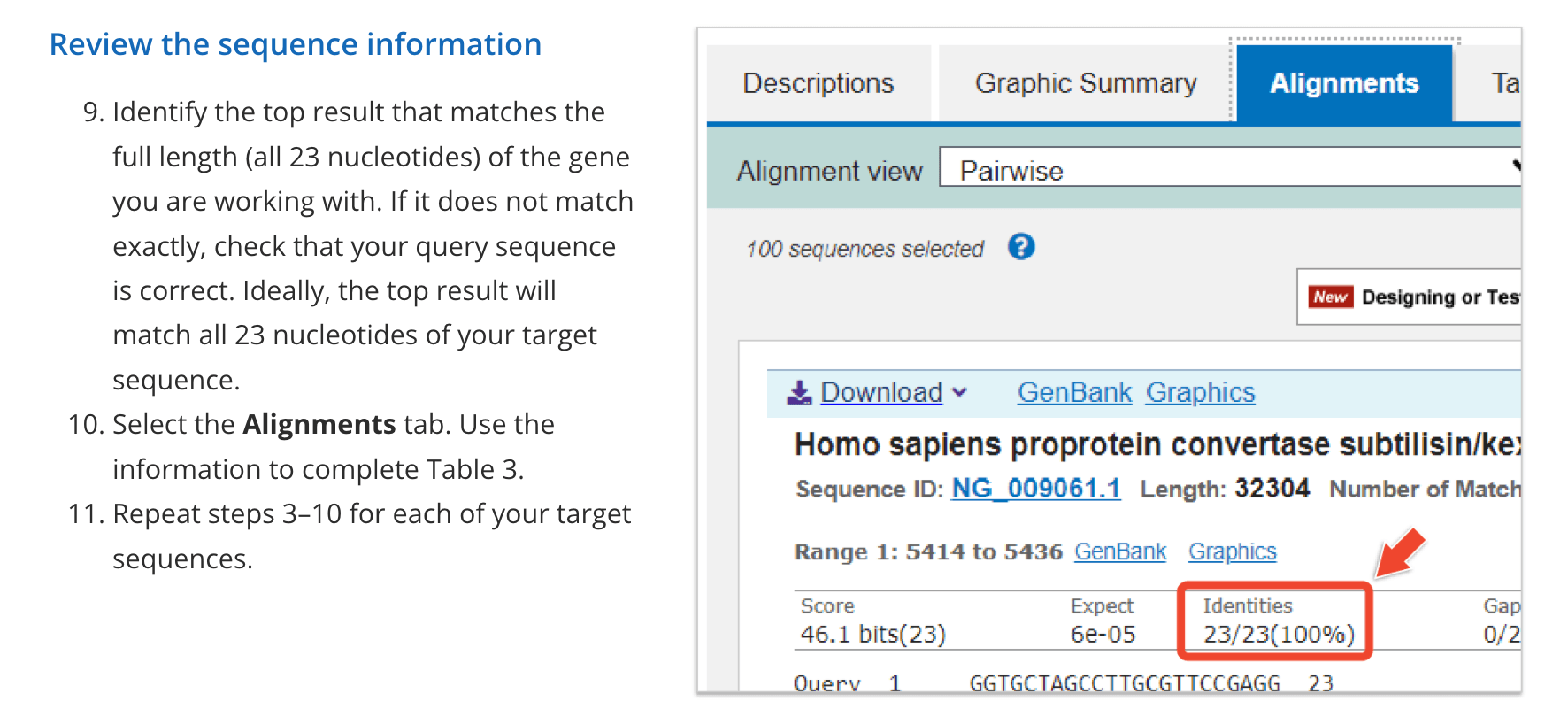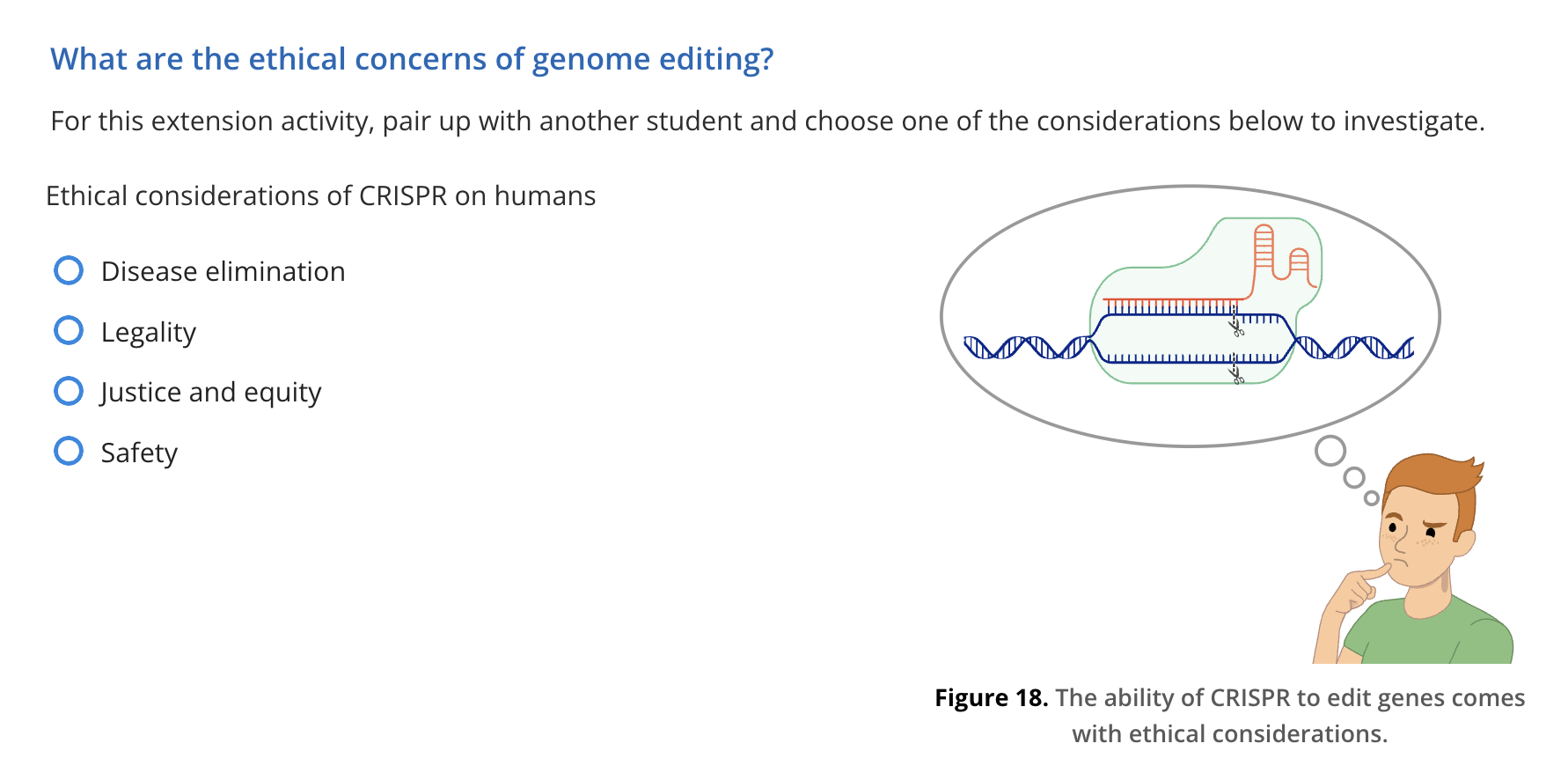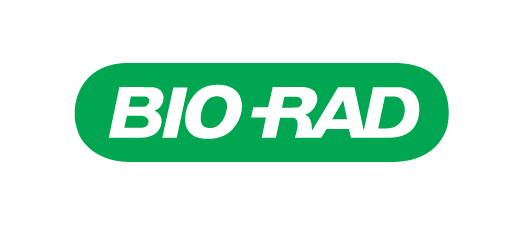We are pleased to announce the release of the new CRISPR Lab, developed in partnership with Bio-RadTM Laboratories.
In this lab, students build on their knowledge of gene editing and use the Out of the Blue CRISPR Kit to perform CRISPR on bacteria.
Students confirm their experiment was successful via blue-white screening, and can take advantage of optional extensions activities to perform a BLAST search and discuss the ethics of editing genomes.
The lab is only one of the 34 labs that make up the Lt Biology Collection, an online teaching solution that integrates with market leaders Bio-Rad and Vernier® Science Education to streamline biology teaching. This comprehensive curriculum enables student to engage with molecular biology techniques and authentic data collection, all via the cloud-based active learning platform Lt.
Related: PCR, CRISPR, ELISA and more! Bio-Rad kits expand the Lt Biology Collection »
Take a quick tour through the CRISPR lab activities in the video below, and find out what you and your students can expect from this exciting new lab!
What is CRISPR?
Gene editing is the process of modifying the deoxyribonucleic acid (DNA) of an organism. These modifications generally include adding, removing, or editing specific sequences of DNA to affect how genes are expressed. For example, the gene encoding for the green fluorescent protein from jellyfish Aequorea victoria can be inserted into another organism's genome to make it glow green when exposed to UV light.
While making organisms glow is a fun example, gene editing provides the possibility of curing genetic diseases. This seemed infeasible until gene editing technology became significantly cheaper and easier in recent years, particularly with the CRISPR-Cas9 methodology. Clinical trials using CRISPR on humans to cure sickle cell anemia and hereditary blindness began in 2019 and 2020, respectively.
The CRISPR-Cas9 system is a modification of a natural system found in prokaryotes, which use the system to incorporate modified pieces of viral DNA into their own genome as a defense mechanism against viruses. The viral DNA sequences are added in between clustered, repeated sections termed "clustered regularly interspaced palindromic repeats", or CRISPRs.
The CRISPRs and viral DNA act as a database of previously-encountered viruses. This database is used by an enzyme, called Cas9, that can cut viral DNA. When a related virus (a virus with some DNA that matches one of the sequences) infects a prokaryote, Cas9, in combination with a specific type of RNA called sgRNA, can identify and cut the matching DNA section from the virus. This stops the infection and protects the prokaryote.
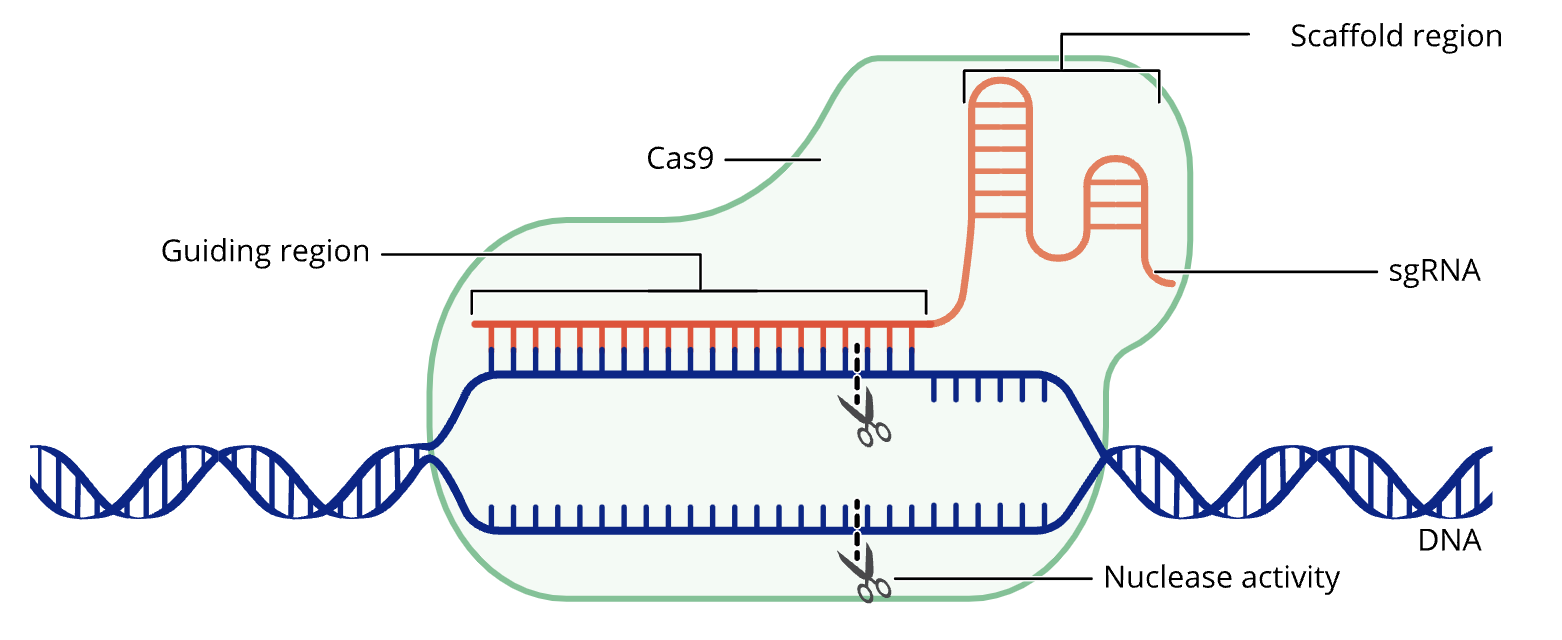
The Cas9–sgRNA complex used to target a specific sequence of DNA.
The Cas9–sgRNA complex can be modified to target a specific gene, and a modified Cas9–sgRNA complex is the foundation of the CRISPR technique. The simplicity and precision of CRISPR makes it a very powerful gene editing technique.
Bringing CRISPR into the classroom
As detailed above, CRISPR is a rather complex process involving specialist equipment and multiple steps. Fortunately, Bio-Rad has developed a robust protocol and kit for teaching CRISPR in the classroom. The Out of the Blue CRISPR Kit provides all the reagents and consumables needed for your students to use a CRISPR gene editing protocol to modify a chromosomal gene in E. coli.
“I use Bio-Rad kits to bring Nobel-winning, cutting-edge science into my classroom, and my students have deeper and richer discussions as a result.”
- Mary Wurth, Tamalpias High School , Mill Valley, CA
Introducing the CRISPR Lab
Our interactive CRISPR Lab is now part of Lt's Biology Collection, a complete curriculum of ready-to-use labs for teaching undergraduate biology.
What’s in the lab?
The CRISPR lab extends beyond the basic gene editing techniques students explore in the Bacterial Transformation lab, also found in the Lt Biology Collection.
Students use the Bio-Rad Out of the Blue CRISPR Kit to edit bacterial DNA and turn bacterial colonies from blue to white. They do this by disrupting the function of the lacZ gene, which normally breaks down the substrate X-gal to produce a blue pigment.
First, students are provided with background information on general gene editing principles, and the CRISPR-Cas9 system. They learn about the lacZ gene, the role of arabinose, and plasmids in the editing process.
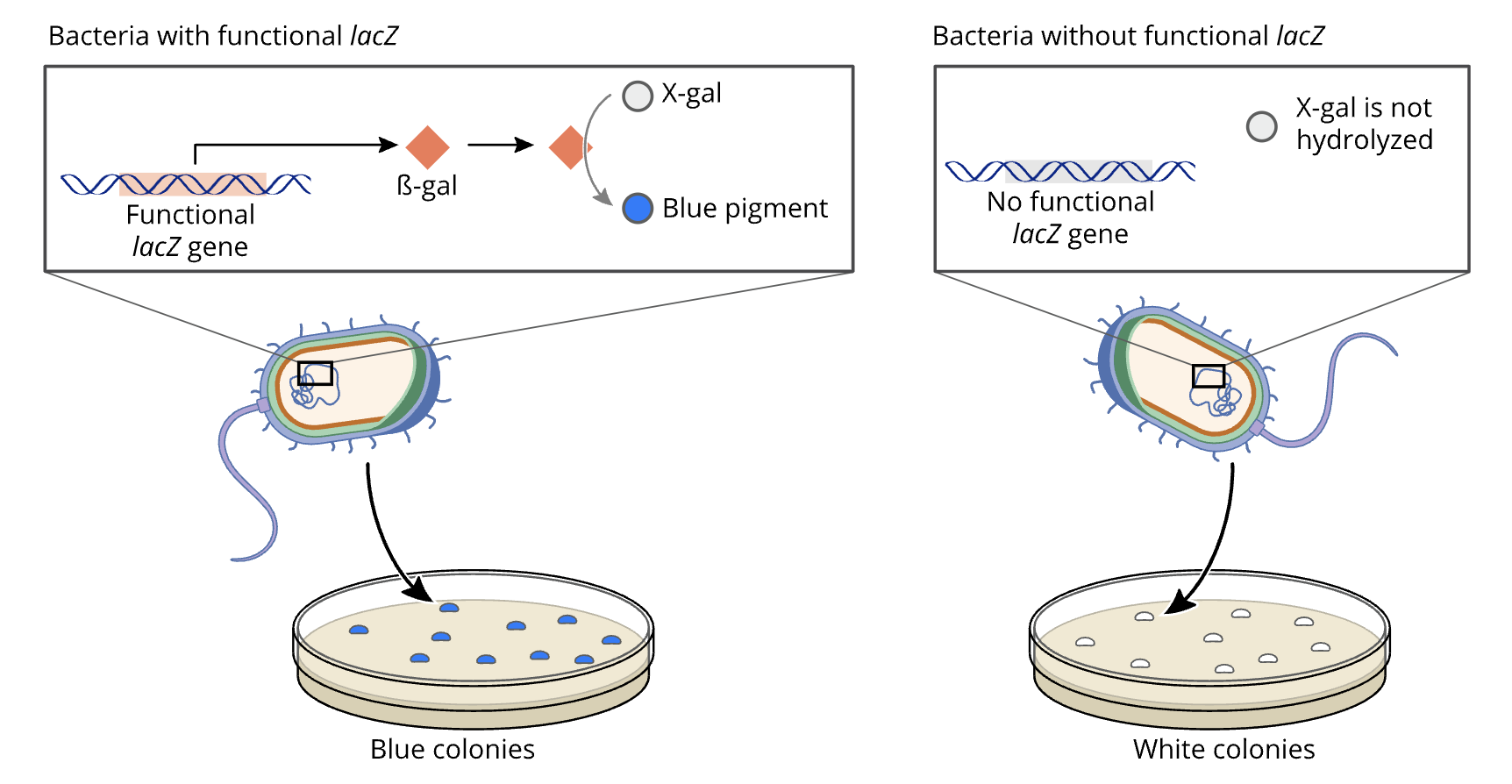
The function of the lacZ gene in blue-white screening.
The Challenge page tests students’ basic knowledge before they begin the lab protocol. Students are asked to label the Cas9-sgRNA complex, for example, and are asked to make a prediction as to how their actions will change lacZ gene function and the color of the resulting bacterial colonies.
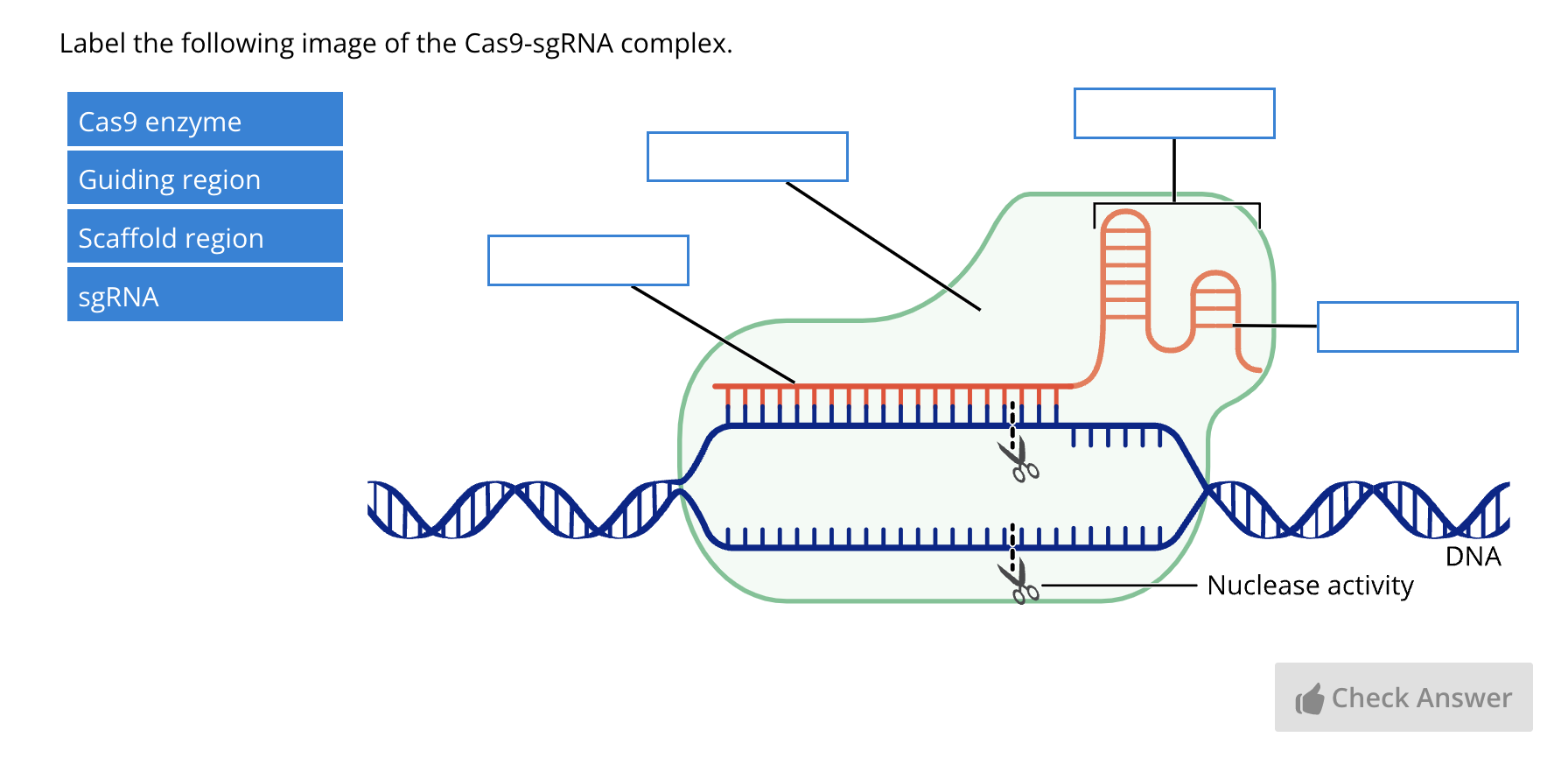
A "Label Image" question on the Challenge page requires students to label the components of the Cas9-sgRNA complex.
After students use the CRISPR Kit to edit bacterial DNA, they count the number of different colored colonies in each plate and explain their observations. Their ability to synthesize a sound argument is developed when they are asked to make a claim, provide evidence and their reasoning, and rebut alternative explanations.
On the Review & Integration page, students’ learning is consolidated as they:
- Review their predictions
- Discuss why controls are necessary
- Examine a use-case of CRISPR called CAMERA, and
- Reflect on what they’d like to investigate next.
Finally, you can choose to extend students with one or both of two available extension activities:
- Students choose a genetic disease and perform a BLAST search to find a relevant target site for CRISPR editing.
- Students confront the ethical considerations of CRISPR.
Students are guided to summarize their work in a scaffolded lab report before completing the lab.
How can I access the Lab?
For those already using Lt, you can import the CRISPR Lab as part of the Biology Collection.
New to Lt? No worries! You can preview the lab for free. Or, for those wanting to experience Lt immediately, you can sign up for our free trial!
Bio-RadTM Laboratories' respected and innovative educational kits equip students with foundational skills and make scientific discovery accessible. In the Lt Biology Collection, educators can bring cutting-edge molecular biology techniques to the classroom via Bio-Rad kits while ensuring engaging, interactive learning takes place in Lt.
Vernier® Science Education's award-winning technology, software, and data-analysis tools are trusted by educators worldwide. In the Lt Biology and Chemistry Collections, Vernier's portable, robust and affordable Go Direct Sensors are used to sampled data directly into Lt.
Additional resources:
PCR, CRISPR, ELISA and more! Bio-Rad kits expand the Lt Biology Collection »
New labs in the Lt Biology Collection: Easily teach about DNA, proteins, pollution, and climate change »
Talking Teaching: Engaging remote biology students »
WEBINAR: Versatile Biology: Engaging Experiments for Any Learning Environment »
WEBINAR: How to Enliven Your Online Biology Teaching »
Lesson Design: How to promote the six core competencies for undergraduate biology students »
Celebrating Darwin Day – Preview Lt's new Population Genetics and Evolution Lab! »


